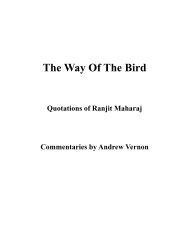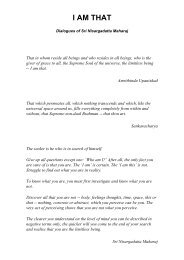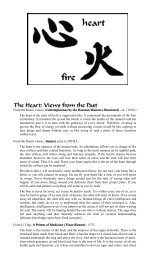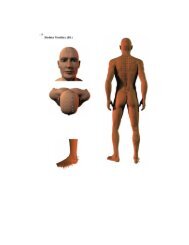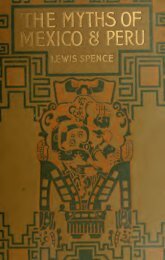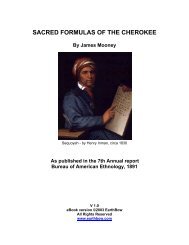Create successful ePaper yourself
Turn your PDF publications into a flip-book with our unique Google optimized e-Paper software.
On magic<br />
This philosophy is supreme, divine and true, since it is quite in agreement<br />
with nature by positing the following principles of reality: first, water<br />
or the abyss or the Styx; second, dryness or atoms or earth (I am not speaking<br />
of the terrestrial globe); third, spirit or air or soul; fourth, light. These<br />
are so different from each other that one cannot be transformed into the<br />
nature of another, although they do come together and associate, sometimes<br />
more or less, sometimes all or some of them.<br />
On the double motion of things and on attraction<br />
There are two kinds of motion, natural and preternatural. Natural motion<br />
comes from an intrinsic principle, while preternatural motion is from an<br />
extrinsic principle; natural motion is in harmony with the nature, structure<br />
and generation of things, preternatural motion is not. The latter is<br />
twofold: violent, which is against nature, and ordered or structured, which<br />
is not contrary to nature. What is commonly called natural motion is found<br />
in all genera or in all the categories, leaving out the distinction between<br />
motion and mutation. 10<br />
For now, we omit all the other classes of motion and their species and<br />
consider only natural motion in place. One type of this is possessed by natural<br />
things and does not move a thing away from it own proper place; this<br />
is circular motion, or a version thereof. The other type is straight line<br />
motion, which is not naturally possessed by natural things. For example,<br />
air moves in a straight line to fill a void. A stone moves through air, and a<br />
body which is heavier than water moves through water, in a straight line in<br />
order to occupy the place in which it either is at rest or moves naturally.<br />
And as much as it can, a contrary flees from its contrary in a straight line,<br />
for example, fumes, vapour and water from fire (for it goes faster to a<br />
greater distance through a straight line). Likewise, similar and agreeable<br />
things tend towards each other in a straight line, for example, straw to<br />
amber, and iron to a magnet, so that they can rest together or move better<br />
and more easily.<br />
There is also a third type of local motion, which is an inflow and an<br />
outflow found in all natural things when any of their parts are ejected<br />
in various ways and in every direction. For now, we will call this ‘spherical’<br />
motion. For it does not occur either in a straight line, or to or from<br />
10 This is an Aristotelian distinction in which ‘motion’ refers to changes in quality, quantity and place,<br />
while ‘mutation’ refers to changes in substance or essence.<br />
118







